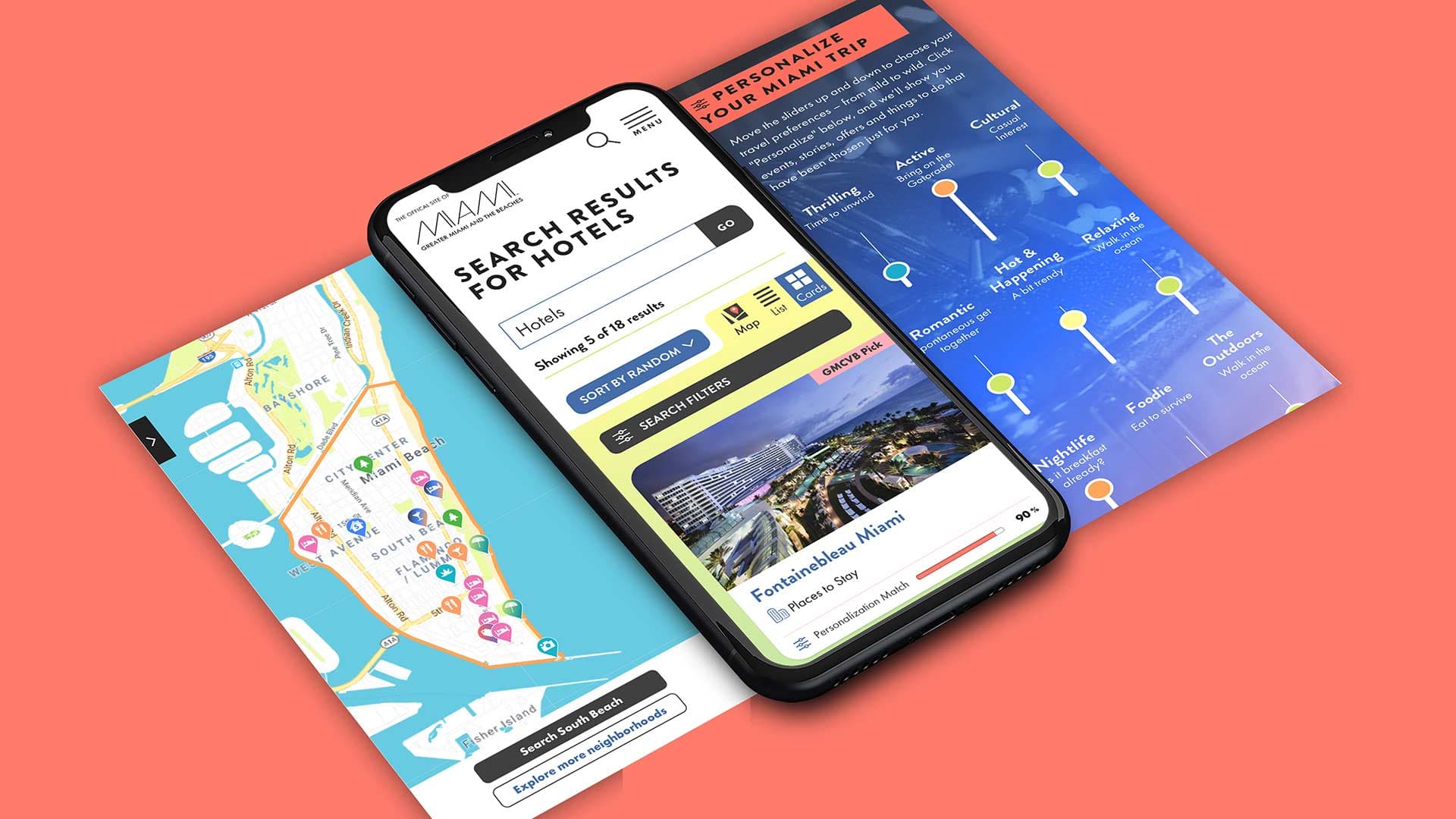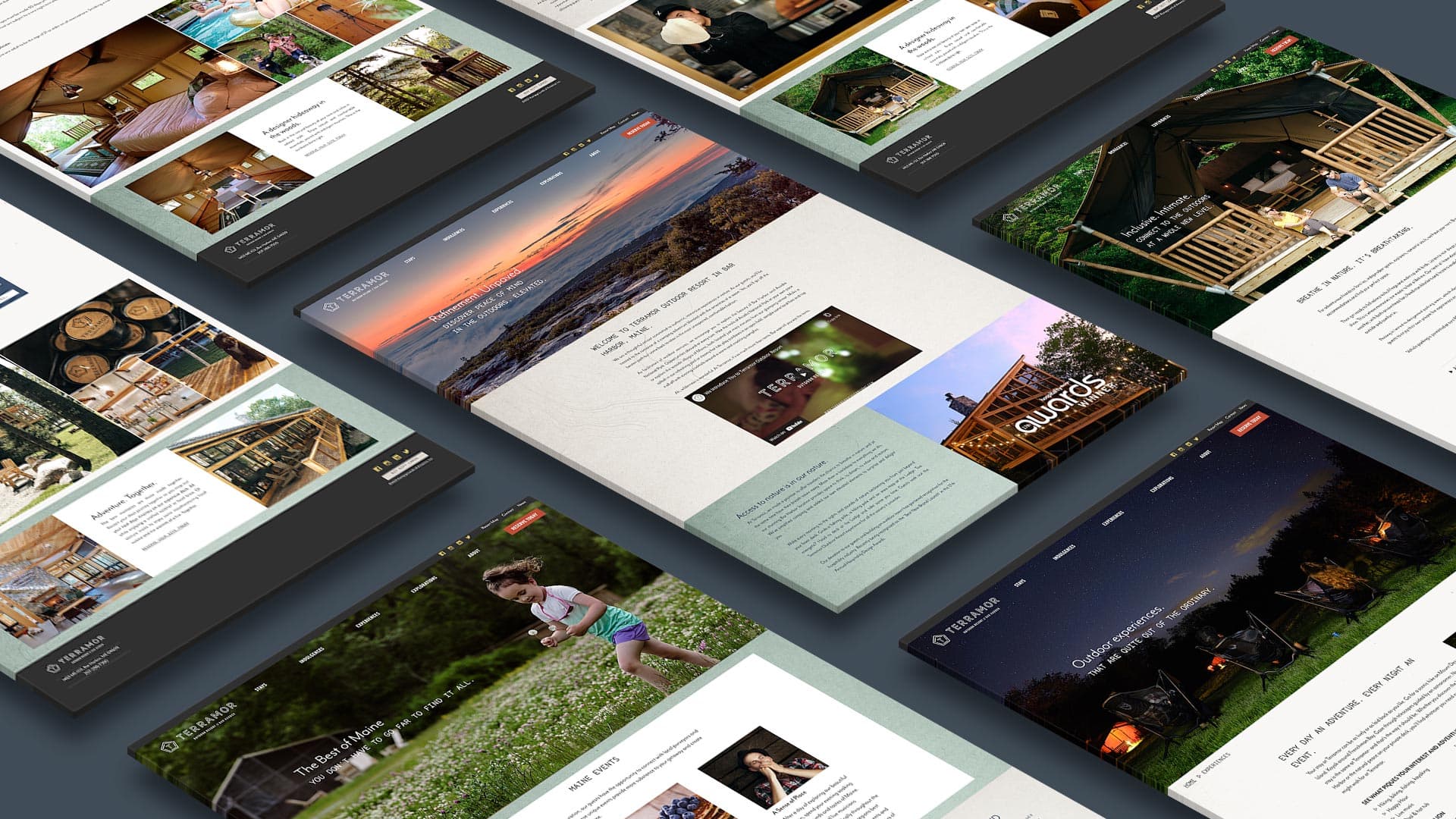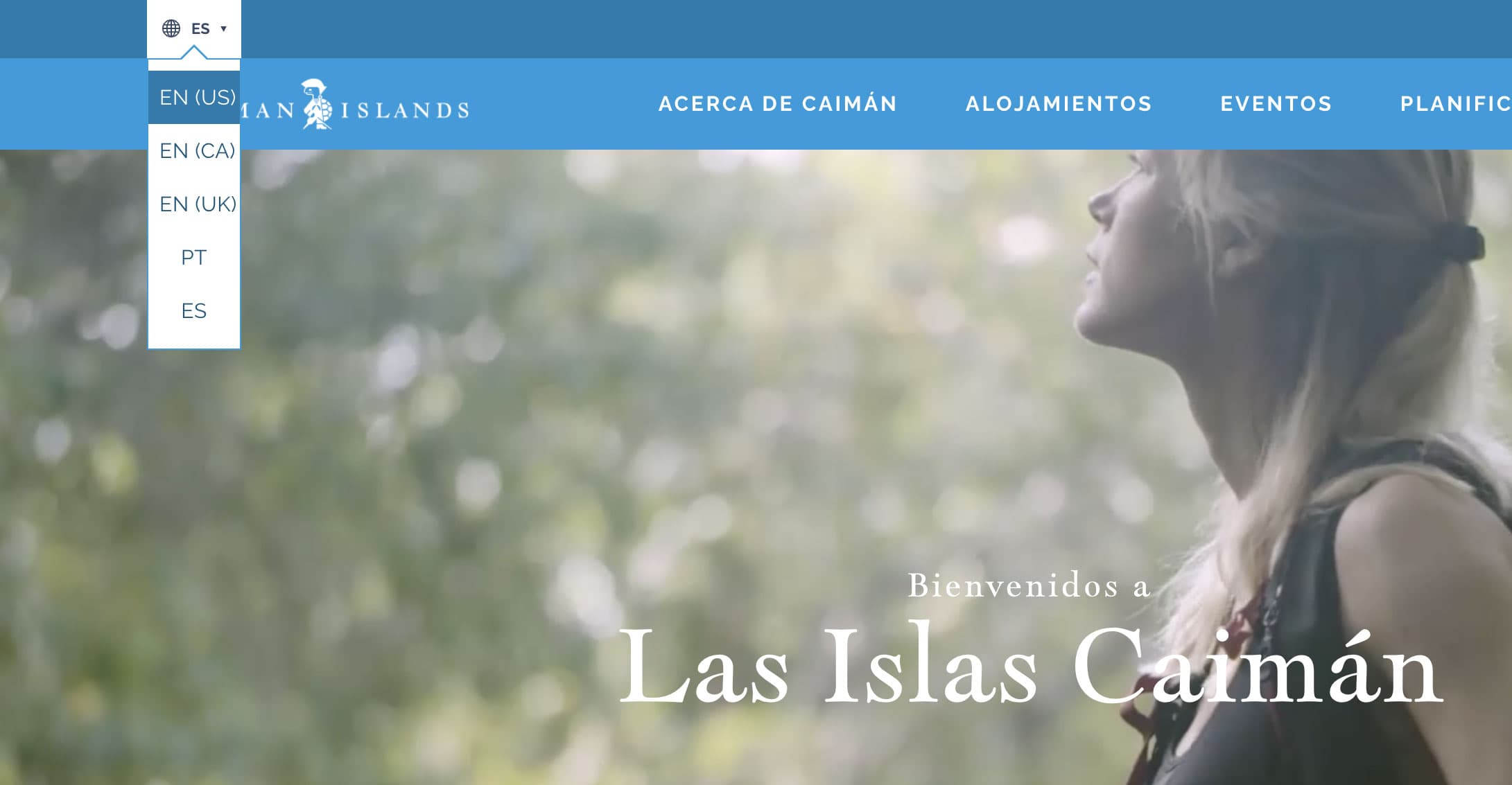
Making your tourism website a destination
The building blocks for a best-in-class tourism experience

Creating a great website for your destination isn't just about listing attractions or promoting flight deals. It's about capturing the essence of a destination and delivering that experience to potential visitors at the right moment in their decision-making process.
Whether you’re a seasoned marketer or website manager or if you’re just starting to plan your tourism website redesign, these key features will help you build a tourism website that stands out and converts site visitors into tourists to your destination.
Showcase the Visitor Experience
In the digital age, first impressions start online. In addition to making sure your website has an intuitive architecture and a mobile-friendly responsive design, your tourism website needs to immerse visitors in the experience of your destination. Think of it as a virtual tour that provides inspiration, sparks curiosity, and drives desire to make that dream a reality.
Here are some ideas for bringing your destination alive on the site:
Rolling Background Videos: Use high-quality videos that capture the beauty and energy of your destination; infuse them throughout the site to add texture and movement. Keep in mind that videos need to be compressed or served through a 3rd party streaming service like Vimeo or YouTube, so they do not slow down the page load speed of your site.
Imagery over Text: Showcase stunning images that highlight the landscape, culture, and unique aspects of your area, using full-bleed background images throughout the key pages on your site. In many cases, pictures convey more than words, so keep your headlines and body copy concise, letting the images steal the show. Similar to videos, it is important to compress your images to reduce file size, but to do so without sacrificing quality. One more note: we recommend avoiding image carousels, where users may choose not to engage with them and those beautiful images you want to highlight can get lost.
360 Tours: Offer interactive tours of your destination or important attractions, allowing site visitors to explore key sites virtually, making them feel like they’re already there.
The visual experience of your website plays a pivotal role in appealing to the emotions and senses of potential tourists. By leveraging high-impact visuals, you can set your destination apart and entice more visitors.

Provide Clear Pathways to Trip Planning
Your website should act as a roadmap, guiding potential visitors through the process of planning their trip. This involves understanding your audience’s needs and providing clear, intuitive pathways to the information they are seeking. During the user experience phase of your website development process, don’t skimp on the following considerations:
User Journeys & Personas: Map out the different types of visitors and their specific needs. Are they adventure seekers or culture vultures? Family vacationers or solo travelers? Foodies or beach bums?
Revisit your Sitemap: Once you’ve identified the different types of travelers that may be interested in your destination, consider how to organize the content of your site into clearly defined buckets. A card sort is a great place to start. Brainstorm all of the types of information you intend to have on your website, and ask a sample set of users to sort that information into buckets, even labeling those buckets with terminology that makes sense to them. This provides great insight into changes you can make to your website’s sitemap and the hierarchy of pages it contains.
Tracking Off-Site Journeys: Many users will click off your site to book flights, hotels, or tours, and this is usually a great thing! It means they are one step closer to visiting your destination. But don’t forget that we need to track those clicks so we know what users have done on your site before they make the decision to make those travel plans real. Implement tracking mechanisms to follow these off-site journeys and gather data on user behavior so you can mine it later to find important trends and data.

Highlight Local Magic and Culture
Tourists are often drawn to the unique aspects of a destination— activities, food, and nightlife offered by local businesses, events and cultural highlights. Ensure your website bubbles up these attractions for your site visitors by:
Featuring local businesses: whether you provide a curated collection of businesses, or a full directory, make sure to show some love to the local businesses at your destination. Even better, tag and categorize those businesses and offer a faceted search where users can use filters and search queries to drill down to find the perfect local gem they are looking for.
Promoting events and festivals that showcase the local culture: whether it’s flower shows, art shows, farmer’s markets, or the annual Pirate’s Week in the Cayman Islands, make sure that these rotating attractions are findable through your website. An Events Calendar is a great way to entice visitors to pick their travel dates to align with these unique cultural attractions that your destination has to offer.
Creating content that highlights the personality and uniqueness of the community: Keeping a current blog on your site is a great way to stay relevant and bring personality to your tourism website. Develop a voice for your destination: one that is fun, carefree, exciting – the voice of a host welcoming travelers to come visit.

Provide Language Translation Options
Tourism is an international business. Offering language translation options broadens your reach and shows that your destination is welcoming to visitors from around the globe.
Multilingual Support: Ensure your website is easily translatable into multiple languages. There are plenty of great automated services, including Google Translate API, that will make this easily attainable for your site, as well as options for switching between pages that have been manually translated by real translators – ensuring the content is accurate and naturally written.
Localized Content: Tailor content to cater to different cultural contexts and preferences. The Cayman Islands website offers region selector functionality that detects the user’s language preferences based on their browser settings, and shows tailored pages based on that user’s regional preference.

Ensure Accessibility for All Visitors
Website accessibility is not only a legal requirement in many countries, but it is also a sign of a welcoming and inclusive destination. Ensure your site is navigable for people with vision impairments or other disabilities by implementing:
ALT Text for Images: Describe images using ALT text that can be read by screen readers. The best ALT text is written to fully describe the content of images for those who may not be able to see them, making sure those users do not miss anything.
Keyboard Navigation: Make sure users can move through your site using just the keyboard. This means that users should be able to tab through all actions on the site.
Readable Fonts and Contrast: Use fonts and color contrasts that are easy on the eyes. During the design phase of your website, run your designs through a contrast checker to make sure that text content can be read on top of different background colors.
Think Like a Visitor
Put yourself in the shoes of a potential visitor. What are their search behaviors? What kind of information are they looking for? Many of these questions should be considered in depth during the user experience phase of a website redesign or refresh project, to help define the content and architecture of your site.
Use the insights from your UX research to also optimize your website for search engines.
Keyword Research: Identify and incorporate keywords related to your destination’s unique attributes. This research will help you understand what potential tourists are searching for online and ultimately help them discover your site. Use tools like Google Keyword Planner, Ahrefs, or SEMrush to generate a list of related keywords based on your seed keywords.
SEO Best Practices: Use meta descriptions, ALT tags, and relevant content to improve your search engine ranking. Make sure your website is filled with relevant, valuable content that can help it to be identified in search results. Many of the recommendations we’ve suggested above will help with this: create a local business directory, include an events calendar, and keep up with a relevant blog to help naturally boost the content of your website in search results.
Pull it all Together
Building a great tourism website is no small feat, but with these key features in place, you’ll create a dynamic, engaging, and highly functional site that attracts and retains visitors. Remember, the goal is to make the online experience as captivating as the actual visit.
Fuseideas has in-house experts in the Travel & Tourism industry and we specialize in website design and development projects. Get in touch with our team to bring your destination to life online.


